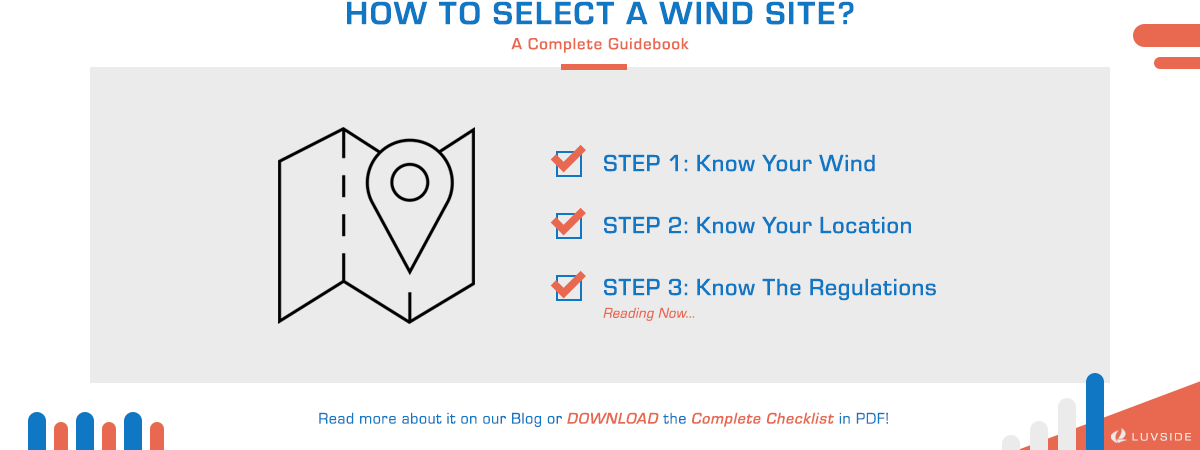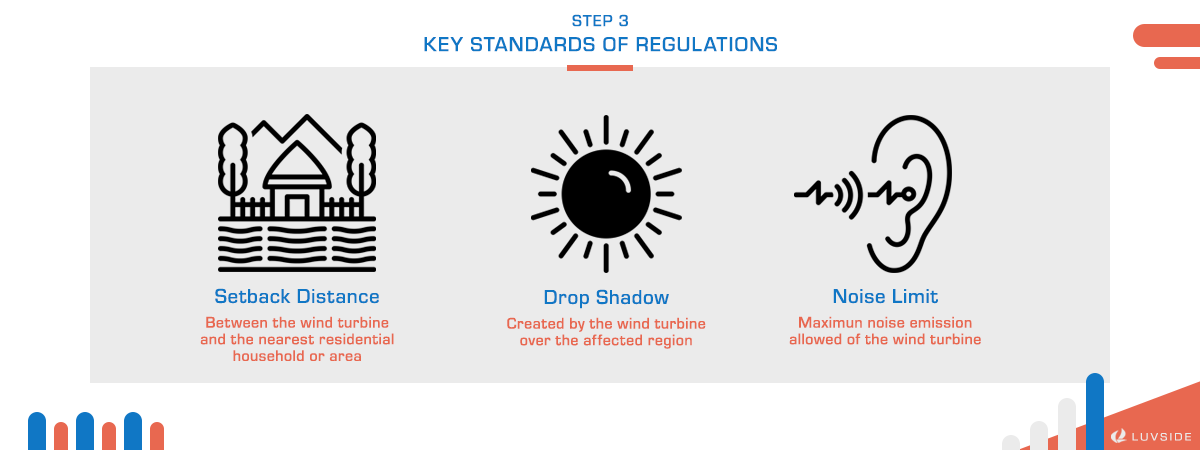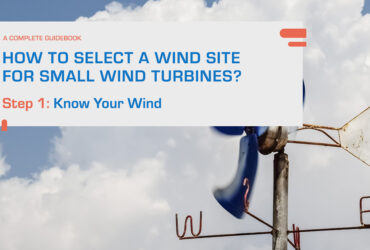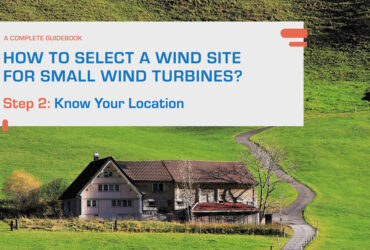
Site selection: Know regulations
You have enough wind resources. You have the perfect location for your wind turbine. Now, it’s time to build it. Unfortunately, installing a wind turbine is not as simple as planting a tree. It is sometimes mandatory to acquire a building permit for small wind turbines or comply with certain requirements and limitations.
How to Select A Wind Site: A Complete Guidebook
“How to Select A Wind Site for Small Wind Turbines?” is a complete guidebook that will guide you through 3 most essential steps of evaluation and assessment for your potential or chosen wind site. You can access the articles on our blog or download the complete guidebook in PDF.

Wind Turbine Policies and regulations vary across regions
The policies governing wind turbine installation vary across countries, states, counties, and municipalities. Generally speaking, the regulation standards include the setback distance between the turbine and nearby residences, noise limit, and drop shadow.
In some countries, small wind turbines up to 10 meters tall and with diameters shorter than 7 meters are exceptions to restrictions. However, in some countries or regions, it could still be required to pass the inspection of local authorities before installing a small wind turbine.
Germany
According to the Bundesverband Kleinwindanlagen, small wind turbines up to 10 meters tall and with diameters shorter than 7 meters are categorized as “Micro” and “Small” wind turbines. These turbines like the LuvSide turbines are exempted from construction regulations in most of the states except Berlin, Bremen, Hamburg, Lower Saxony, Rheinland-Pfalz, and Schleswig-Holstein. You can find detailed legal regulations and references for each state on the Bundesverband Kleinwindanlagen website.

Europe
Across European countries, there are no universal standards. Some countries only apply legal recommendations that are not mandatory. Some have mandatory requirements that must be fulfilled.
1. Only Recommendations
The local authorities have legal recommendations for setback distance, noise limit, and drop shadow, but no requirements. The countries include: United Kingdom, Ireland, Spain, Italy, and Sweden.
2. Only Noise Requirement
The local authorities have regulations regarding noise limits and non-mandatory recommendations for the other two standards. The countries include: Portugal and the Netherlands.
3. All Requirements
The local authorities have regulations for setback distance, noise limit, and drop shadow that are mandatory to comply with. The countries include: Denmark and France.
Worldwide
Your local legal experts, building inspectors, and governmental authorities know best. It would be most helpful to consult with them to gain accurate, up-to-date professional insights regarding wind turbine regulations and building permits.
Stay up-to-date with your local authorities
Please note that legal changes might occur any time and information on the internet could be outdated. We advise you to contact your local authorities or consult with legal experts for official confirmation.
Now that you have completed all three steps of evaluation for your wind turbine location, you are prepared to move further in your wind energy transformation. With the data and assessment in hand, you can consult better with different small wind turbine suppliers to find the best small wind turbine for your household, organization, or community.
Not sure about the evaluation process? Read more about the previous two steps in selecting a wind site on our blog or download the complete guidebook in PDF.
Related Content
Let’s face it. Investing in a small wind turbine for your household or company might not be the cheapest expense to spend. How can we...
Selecting the most suitable location for your small wind turbine isn’t only about picking where the most wind goes. A wind turbine needs to be...

